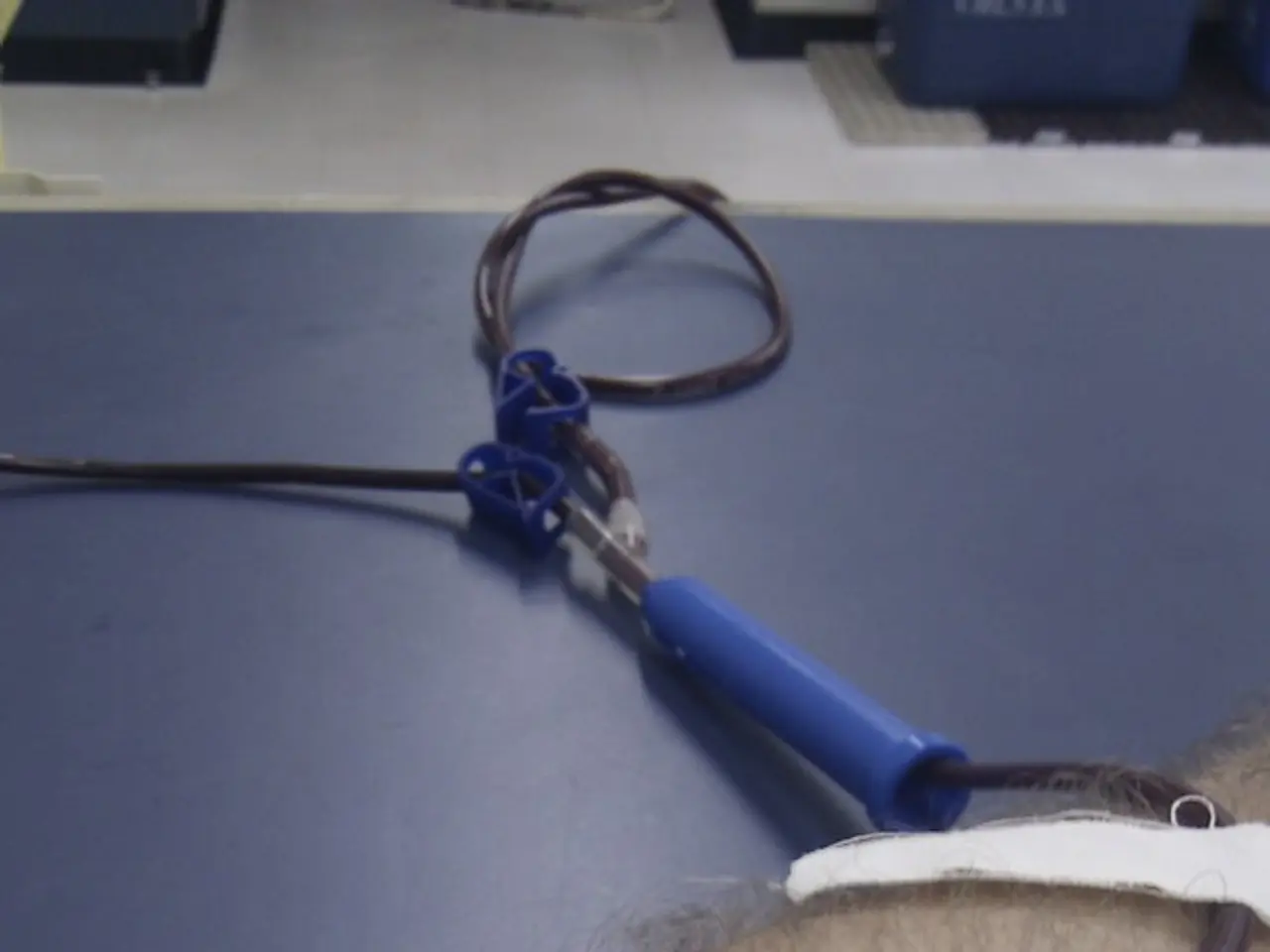Symptoms, treatments, and prognosis of advanced skin cancer known as Metastatic Melanoma
In the fight against metastatic melanoma, doctors have a variety of treatment options at their disposal. This form of skin cancer, the third most common after basal cell carcinoma and squamous cell carcinoma, can be challenging to manage due to its tendency to spread to other areas of the body, such as the skin, lungs, liver, bones, and brain [1].
Common treatment approaches include immunotherapy, chemotherapy, and radiation. Immunotherapy, which helps a person's immune system find and kill cancer cells, is often used, with combination immune checkpoint inhibitors like nivolumab (anti-PD-1) plus ipilimumab (anti-CTLA-4) being frequently employed to boost immune responses against melanoma cells [1].
For patients with BRAF mutations, targeted therapies combining BRAF inhibitors (e.g., vemurafenib, dabrafenib) and MEK inhibitors (e.g., trametinib, cobimetinib) are effective treatment options [1]. Recent clinical updates, such as data from the RELATIVITY-047 trial, have highlighted the benefits of combination immunotherapies like nivolumab plus relatlimab, offering more long-term disease control and informing frontline treatment choices [1].
Chemotherapy, which kills fast-dividing cells including cancer cells, is another treatment option, although its use is less common due to the potential for severe side effects [1]. Radiation therapy, which uses high energy rays to kill cancer cells, may be used if the melanoma has spread to the brain or bones [1].
Treatment is often personalized based on factors such as mutation status, disease burden, the patient's performance status, prior therapies, and emerging clinical trial data [1]. Regular follow-ups and monitoring with a doctor are essential for people with a previous medical history of melanoma, as early detection and intervention can significantly improve outcomes [1].
If melanoma cells are found in the lymph nodes, other tests such as blood tests, CT scans, MRI scans, and PET scans may be used to determine if the melanoma has spread to other areas of the body [1]. A dermatologist may perform a biopsy to diagnose melanoma, and a sentinel node biopsy can show whether cancer cells have spread to the lymph nodes [1].
Melanoma usually starts as a single lesion of abnormal tissue on the skin or mucous membrane [1]. Symptoms of metastatic melanoma depend on where the cancer has spread, and can include hard lumps and bumps under the skin, black marks that appear or change, swollen lymph nodes, pain in bones, blood in stool, shortness of breath, and seizures [1].
People can reduce their risk of developing metastatic melanoma by limiting UV light exposure, practicing sun protection measures, and performing regular skin checks [1]. With the ongoing development of new treatments and clinical trials, there is hope for patients with metastatic melanoma, with novel therapies like TIL (tumor-infiltrating lymphocyte) therapy, such as lifileucel, being approved for advanced melanoma that has progressed after standard immunotherapy and targeted therapy [5].
References:
[1] National Cancer Institute. (2021). Melanoma Skin Cancer. https://www.cancer.gov/types/skin/melanoma [2] American Cancer Society. (2021). What Are the Key Statistics About Melanoma Skin Cancer? https://www.cancer.org/cancer/melanoma-skin-cancer/about/key-statistics.html [3] American Society of Clinical Oncology. (2021). Melanoma Skin Cancer. https://www.cancer.net/cancer-types/melanoma-skin-cancer [4] American Academy of Dermatology. (2021). Melanoma Skin Cancer. https://www.aad.org/public/diseases/skin-cancer/melanoma [5] Food and Drug Administration. (2021). FDA approves new treatment for metastatic melanoma. https://www.fda.gov/news-events/press-announcements/fda-approves-new-treatment-metastatic-melanoma
- The predictive benefits of combination immunotherapies like nivolumab plus relatlimab in melanoma treatment have been emphasized in recent clinical updates, providing more long-term disease control.
- In cases where melanoma cells are found in the lymph nodes, additional tests such blood tests, CT scans, MRI scans, and PET scans may be utilized to assess if the cancer has metastasized to other areas.
- The medical-conditions sector has seen great advancements, with novel therapies like TIL (tumor-infiltrating lymphocyte) therapy, such as lifileucel, approved for advanced melanoma that has progressed after standard immunotherapy and targeted therapy.
- Health-and-wellness education plays a crucial role in reducing the risk of developing metastatic melanoma, emphasizing the importance of limiting UV light exposure, practicing sun protection measures, and regular skin checks.
- Individuals diagnosed with melanoma require close supervision and regular follow-ups with a doctor, as early detection and intervention can significantly improve outcomes for patients dealing with this form of skin cancer, such as metastatic melanoma.




